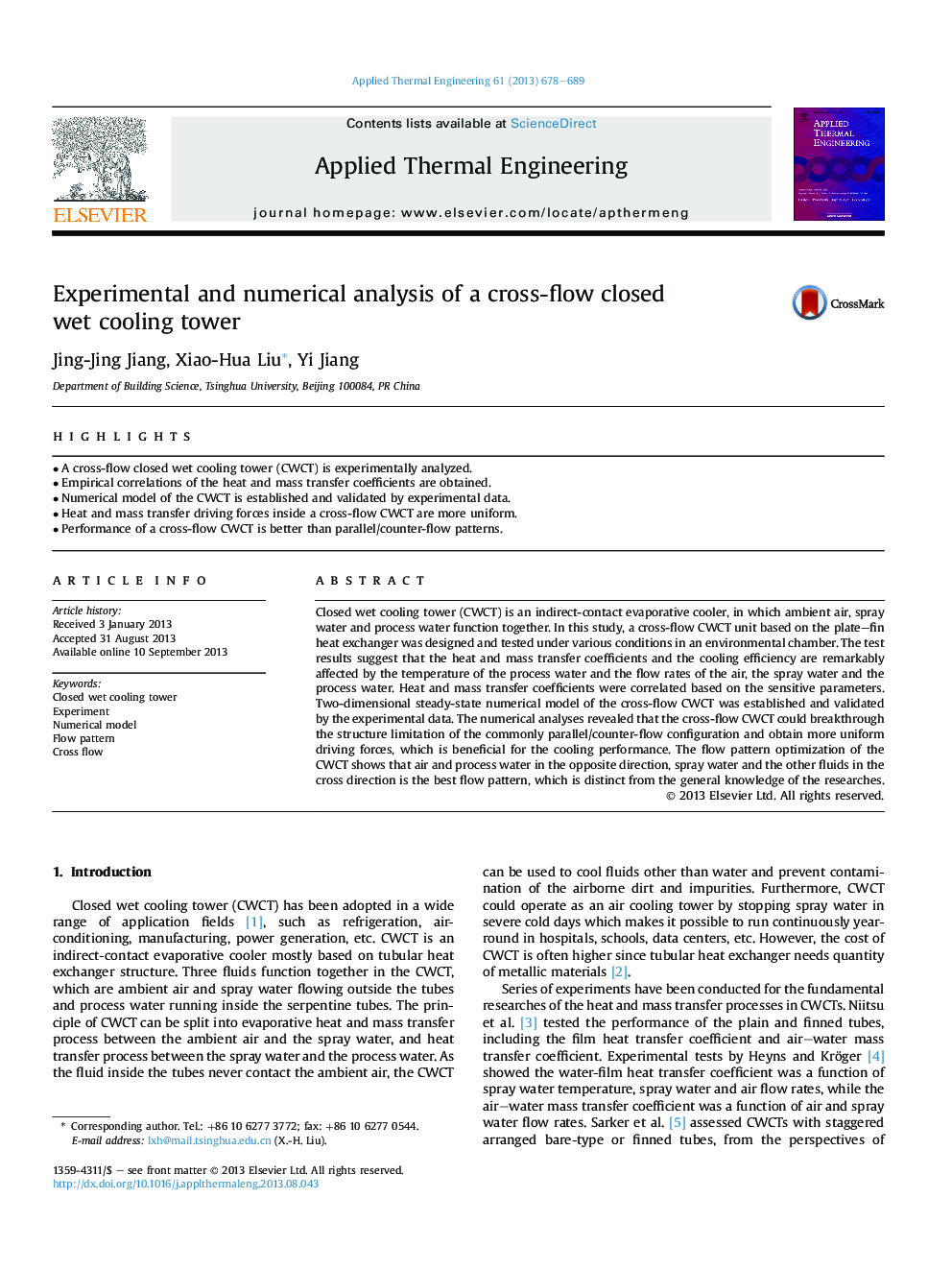| کد مقاله | کد نشریه | سال انتشار | مقاله انگلیسی | نسخه تمام متن |
|---|---|---|---|---|
| 646628 | 884567 | 2013 | 12 صفحه PDF | دانلود رایگان |

• A cross-flow closed wet cooling tower (CWCT) is experimentally analyzed.
• Empirical correlations of the heat and mass transfer coefficients are obtained.
• Numerical model of the CWCT is established and validated by experimental data.
• Heat and mass transfer driving forces inside a cross-flow CWCT are more uniform.
• Performance of a cross-flow CWCT is better than parallel/counter-flow patterns.
Closed wet cooling tower (CWCT) is an indirect-contact evaporative cooler, in which ambient air, spray water and process water function together. In this study, a cross-flow CWCT unit based on the plate–fin heat exchanger was designed and tested under various conditions in an environmental chamber. The test results suggest that the heat and mass transfer coefficients and the cooling efficiency are remarkably affected by the temperature of the process water and the flow rates of the air, the spray water and the process water. Heat and mass transfer coefficients were correlated based on the sensitive parameters. Two-dimensional steady-state numerical model of the cross-flow CWCT was established and validated by the experimental data. The numerical analyses revealed that the cross-flow CWCT could breakthrough the structure limitation of the commonly parallel/counter-flow configuration and obtain more uniform driving forces, which is beneficial for the cooling performance. The flow pattern optimization of the CWCT shows that air and process water in the opposite direction, spray water and the other fluids in the cross direction is the best flow pattern, which is distinct from the general knowledge of the researches.
Journal: Applied Thermal Engineering - Volume 61, Issue 2, 3 November 2013, Pages 678–689